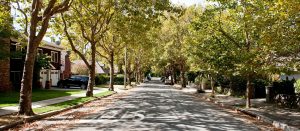
Accessory Dwelling Units (ADUs) & Junior ADUs (JADU)
What is an Accessory Dwelling Unit?
An Accessory Dwelling Unit (aka, “second unit,” “in-law unit,” or “granny unit”) is an additional dwelling located on the same lot as a single-family or multi-family development. An Accessory Dwelling Unit may be attached to the primary residence, detached from the primary residence, or contained within an existing residence or accessory structure.
What is Junior Accessory Dwelling Unit (JADU)?
A Junior Accessory Dwelling Unit is a unit type only allowed with in a Single-Family Residence. JADU’s are limited in size to no more than 500 square feet and contained entirely within the single-family structure. JADU’s are typically converted bedrooms in a single-family home that have an entrance into the unit from the main home and an entrance to the outside from the JADU.
ADU Laws
The City of San Rafael’s ADU Ordinance establishes local regulations regarding ADUs and JADUs. The ADU ordinance makes it easier to develop an ADU and streamlines the permit review process, which further encourages and facilitates ADU construction as a source of affordable housing. The ADU Ordinance is codified in 14.16.285 – Accessory dwelling units (ADUs). On January 1, 2023, two new ADU bills—AB 2221 and SB 897—took effect that supersede City’s adopted standards. In other words, where there are conflicts between the most recent state ADU laws and the City’s ADU ordinance (last updated in 2022), the state law standards apply.
Regulations applying to ADUs and JADUs are as follows (as of Jan. 1, 2024):
Types of ADUs:
- Attached ADUs would have a maximum floor area of 1,000 square feet or 50% of the existing residence, whichever is less, except that an ADU with up to 800 square feet of floor area must be allowed.
- Detached ADUs would have a maximum floor area of 1,000 square feet.
- There is no maximum size limit for ADUs that involve the conversion of an existing detached structure.
- Conversion ADUs, no maximum size limit for an ADU created from internal conversion of portions of an existing primary residence.
- In multi-family structures, conversion may only occur in existing non-habitable space.
- JADUs may be no less than 150 square feet and no more than 500 square feet.
- ADUs would need to have a minimum of 150 square feet of living area. ADU’S are required to include bathroom and kitchen facilities that meet California Building Code.
Required Setbacks
- Maximum rear and side yard setbacks of a new or expanded ADU, either attached or detached, are 4 feet.
- No additional setbacks are required for internal conversions that maintain the same footprint.
- Front yard setback will be the same as required for the primary residence, provided it does not preclude the construction of an 800 square foot ADU.
Maximum Height:
Detached
- Up to 16 feet in height for a detached ADU on a lot with an existing or proposed single family or multifamily dwelling unit.
- Up to 18 feet in height for a detached ADU on a lot that is within one-half of one mile walking distance of a major transit stop or a high-quality transit corridor with an additional two feet in height to accommodate a roof pitch on that is aligned with the roof pitch of the primary dwelling unit.
- Up to 18 feet in height on a lot with an existing or proposed multi-story multifamily dwelling.
Attached
- Up to 25 feet for an ADU attached to a primary dwelling or the height limit in the local zoning ordinance that applies to the primary dwelling, whichever is lower.
- Except for in the Eichler-Alliance overlay district, where the maximum height for an attached ADU is 17 feet
Remedy for un-permitted Accessory Dwelling Units
ADU and JADU (Junior Accessory Dwelling Unit). The city shall not deny a permit for an unpermitted accessory dwelling unit that was constructed before January 1, 2020, because, among other things, the unit is in violation of building standards or applicable zoning development regulations to accessory dwelling units, unless the local agency makes a finding that correcting the violation is necessary to protect the health and safety of the public or occupants of the structure.
Resources
| Name | Date | Download |
| ADU Single Family Checklist | March 14, 2020 | PDF (250 KB) |
| ADU Multi-Family Checklist | March 17, 2020 | PDF (185 KB) |

